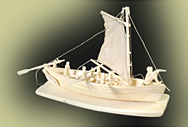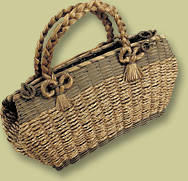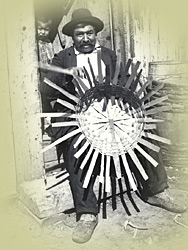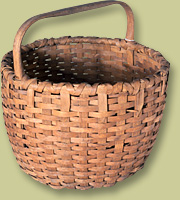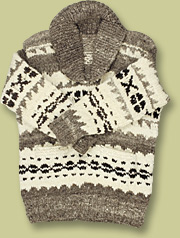|
|
Arrival of Strangers - The Last 500 YearsEconomyCrafts and Cottage IndustriesSome Aboriginal people participated in an increasingly global economy by selling their handmade traditional crafts. These were of better quality and design than similar items that were mass-produced. Some things were sold as souvenirs or handicrafts, but a large part of this market included practical objects such as baskets, snowshoes, moccasins and clothing. Inuit Carvings - With the arrival of the first Europeans on northern shores, Inuit became enthusiastic traders of clothing, household utensils and skins, in exchange for metal goods. Among their trade items were small ivory carvings, often replicas of tools or Arctic animals.
Huron-Wyandot Cottage Industries - The village of Lorette in Quebec was founded in the late seventeenth century. As the non-Aboriginal population grew around them, the Huron-Wyandot began producing objects such as snowshoes, moccasins, baskets and curios for sale. They continue this work today.
Maliseet Basket Makers - Maliseet basket makers became proficient at making sturdy apple and potato baskets used in the agricultural regions of Atlantic Canada. In addition to producing the baskets, many people worked seasonally as harvesters throughout the region. Modern harvesting techniques using industrial machinery have effectively put an end to the large-scale basket production and hand picking. Baskets are now made for the arts and crafts market. Cowichan Knitters - Before Europeans arrived, Cowichan women wove blankets of mountain goat wool. Sheep introduced to Vancouver Island by British settlers provided the Cowichan with a new source of wool. Cowichan women learned knitting techniques from missionaries and settlers. They began making sweaters, toques, mittens and socks to provide some or all of their family's income. By the end of the nineteenth century, the distinctive designs and knitting techniques of the Cowichan were firmly established. Although a number of Aboriginal people on Vancouver Island from Victoria to Nanaimo practise this knitting style, the name "Cowichan" is universally used.
| ||||||
